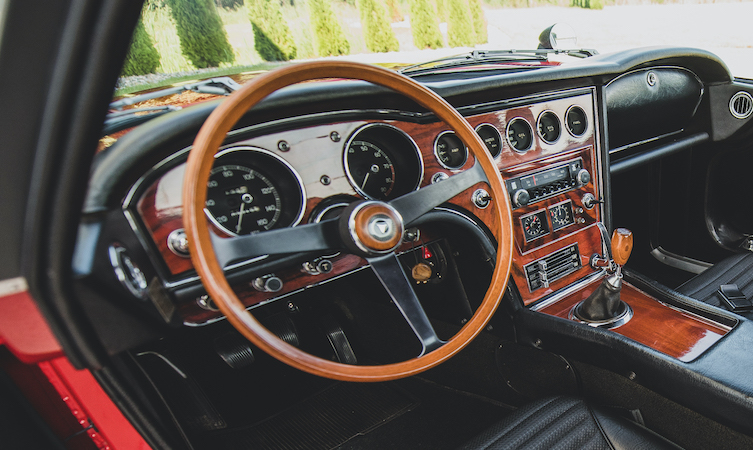When it comes to Lexus steering wheel design, what goes around rarely comes around. And that’s because of the huge change in the design requirements for the once-humble wheel over the last three decades.
For decades, steering wheels were elegant, finely constructed, notably thin-rimmed and dangerous. Even with the use of basic seatbelts, hitting a steering wheel during a collision was likely to result in very unpleasant injuries.

During the 70s and 80s, a big push on safety was led by Californian legislation which, in turn, forced virtually all carmakers to think about driver protection.
Early production airbags were seen in the mid-1970s, before becoming more widely adopted in the US by the late 1980s. This, perhaps, was a result of many US states not making seat belt wearing mandatory. As a result, airbags were even more important in the US market than elsewhere.
All of which explains why the original Lexus steering wheel looks like it does. The 1989 LS wheel was relatively large and dominated by a huge moulded centre boss. The moulding extended on the wheel’s spokes, these ends being used as buttons for sounding the horn.

One of the reasons for the huge boss was both the early airbag technology of the time and the need to provide a big enough airbag to restrain a large adult during a collision.
The larger diameter of the wheel and the leather-wrapped thicker rim was in tune with the spirit of the original LS. It was a luxury car that emphasised comfort and calm over longer journeys.
But ultimately this wheel had only three tasks – enabling the driver to steer the car, occasionally to sound the horn and – in an extreme situation – protect the driver from serious injury in a collision. It was a limited repertoire, but one that it accomplished well.
A decade later, when Lexus launched the revolutionary RX 300 crossover, the Lexus steering wheel had started to morph into something we would recognise today.

Significantly different to the LS steering wheel design, it was marginally smaller but also had a much smaller centre boss. Advancing – and contracting – airbag design had allowed Lexus designers to sculpt longer spokes, which gave the wheel both a more dynamic appearance and allowed the driver to grip the wheel with more intent.
This was probably not coincidence because the RX was intended to be a more dynamic machine than the luxury-first LS. It was the world’s first luxury SUV crossover and it delivered a much more dynamic driving experience than the truck-based SUVs already on the market. To that end, the smaller, grippier wheel in the RX was a reflection of the potential behaviour of the car itself.

A couple of years later the RX wheel was updated with another step towards the changing function of the steering wheel. The left hand spoke gained three switches. All audio-related, one was for changing the volume, one for changing channels or tracks and one to switch between different audio modes.
The shrinking of the airbag had allowed Lexus to design a more dynamic steering wheel, but the space freed up meant that there was now enough ‘real estate’ to add more functions to it. Putting switches on the wheel was a significant safety improvement, allowing the driver to keep their hands on the wheel more of the time.
Around the same time as the RX was launched, Lexus released the IS compact sports saloon. Using roughly the same core construction, the IS wheel was given even more of a performance twist, gaining more heavily styled airbag cover, two colour leather trim and the addition of thumb rests on the inside of the upper rim.

While these were a highly effective styling flourish, they were also a genuine tactile advance. The IS was a driver-focused car and the shaping of the steering wheel simply made the connection between the driver and the front wheels more even direct.
Lexus’s more luxury-orientated steering wheels saw a significant step forward thanks to advances in materials and production techniques. The 2003 Lexus GS was one model that got a wheel with substantially wooden rim. This delivered the tactile sense much-loved from older cars, but with the safety of airbags and finger-tip switchgear.

The advance of wheel-mounted switchgear is exemplified by the RC coupe. Its wheel spokes were made wider so as to accommodate a much larger number of switches. Two four-way touch pads meant the driver could access many more functions, while keeping hold of the wheel.
But the RC wheel was a contrast with the steering wheel of the LFA supercar, which was designed for a much more focused driver. A fatter rim with a flat bottom and much simpler finger-tip switches, it was an expression of car that demanded the driver’s full attention.

Perhaps the best expression of the way the Lexus steering wheel has advanced over three decades is seen in the LC coupe. The scope of its function seen against the original LS wheel is absolutely remarkable, featuring all the steps we’ve seen so far.
Styled, fatter, rim, compact airbag housing and fatter spokes with even more extensive finger-tip switchgear, including lane guidance, radar cruise control and voice control as autonomy starts to become an everyday reality.

The LC also gets paddle shifters, which are mounted to the back of the wheel’s structure, making it possible to shift gear manually without letting go of the wheel.

The advance of the previously-humble steering wheel from having just one active function (sounding the horn) and one passive function (protection in a crash) to allowing their driver to substantially control the vehicle by fingertip, is one of those most interesting stories in automotive development.

Perhaps there are even more functions in the steering wheel’s future, despite what the futurists say about ‘driverless cars’.




